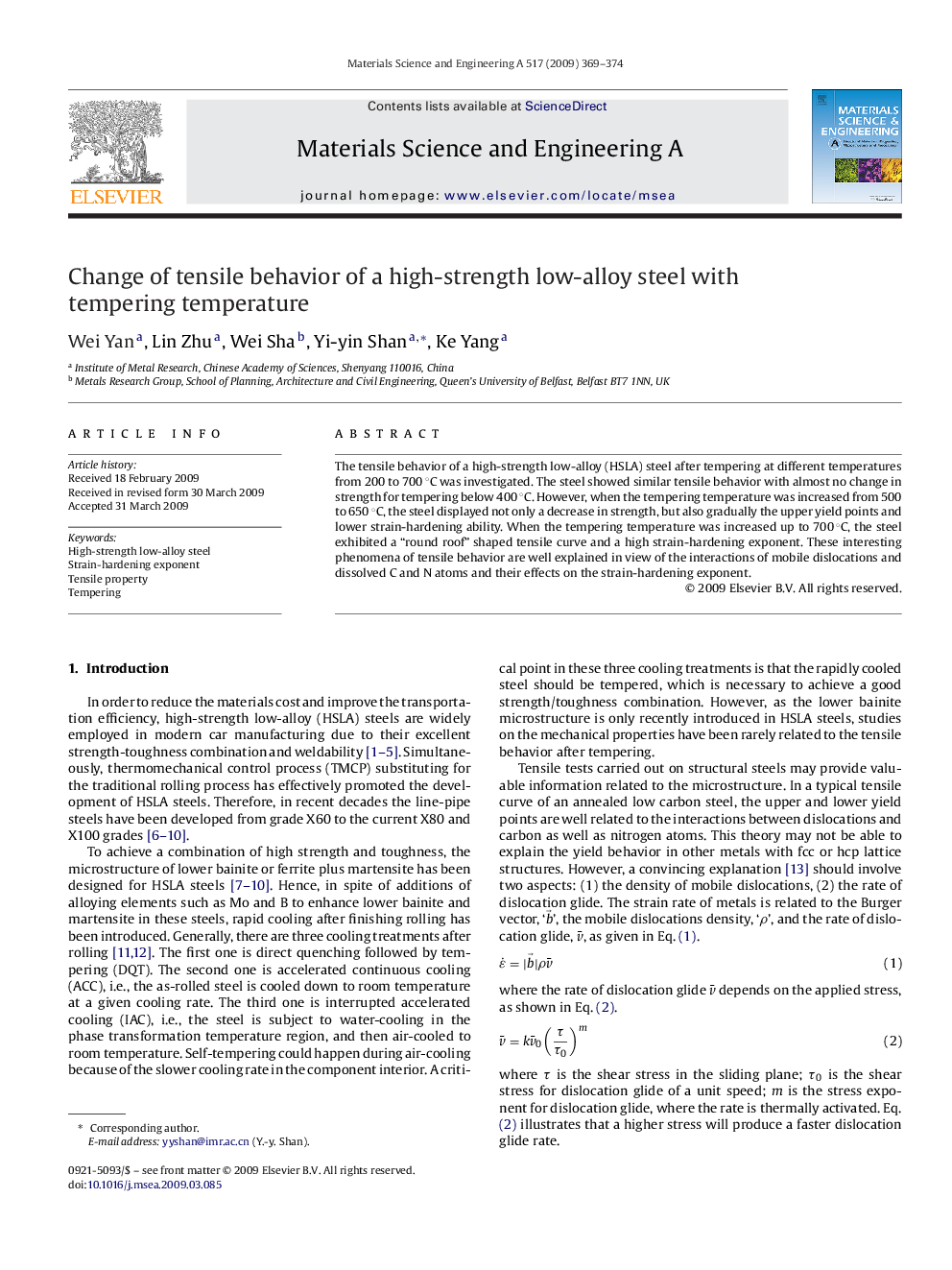| Article ID | Journal | Published Year | Pages | File Type |
|---|---|---|---|---|
| 1580678 | Materials Science and Engineering: A | 2009 | 6 Pages |
The tensile behavior of a high-strength low-alloy (HSLA) steel after tempering at different temperatures from 200 to 700 °C was investigated. The steel showed similar tensile behavior with almost no change in strength for tempering below 400 °C. However, when the tempering temperature was increased from 500 to 650 °C, the steel displayed not only a decrease in strength, but also gradually the upper yield points and lower strain-hardening ability. When the tempering temperature was increased up to 700 °C, the steel exhibited a “round roof” shaped tensile curve and a high strain-hardening exponent. These interesting phenomena of tensile behavior are well explained in view of the interactions of mobile dislocations and dissolved C and N atoms and their effects on the strain-hardening exponent.
